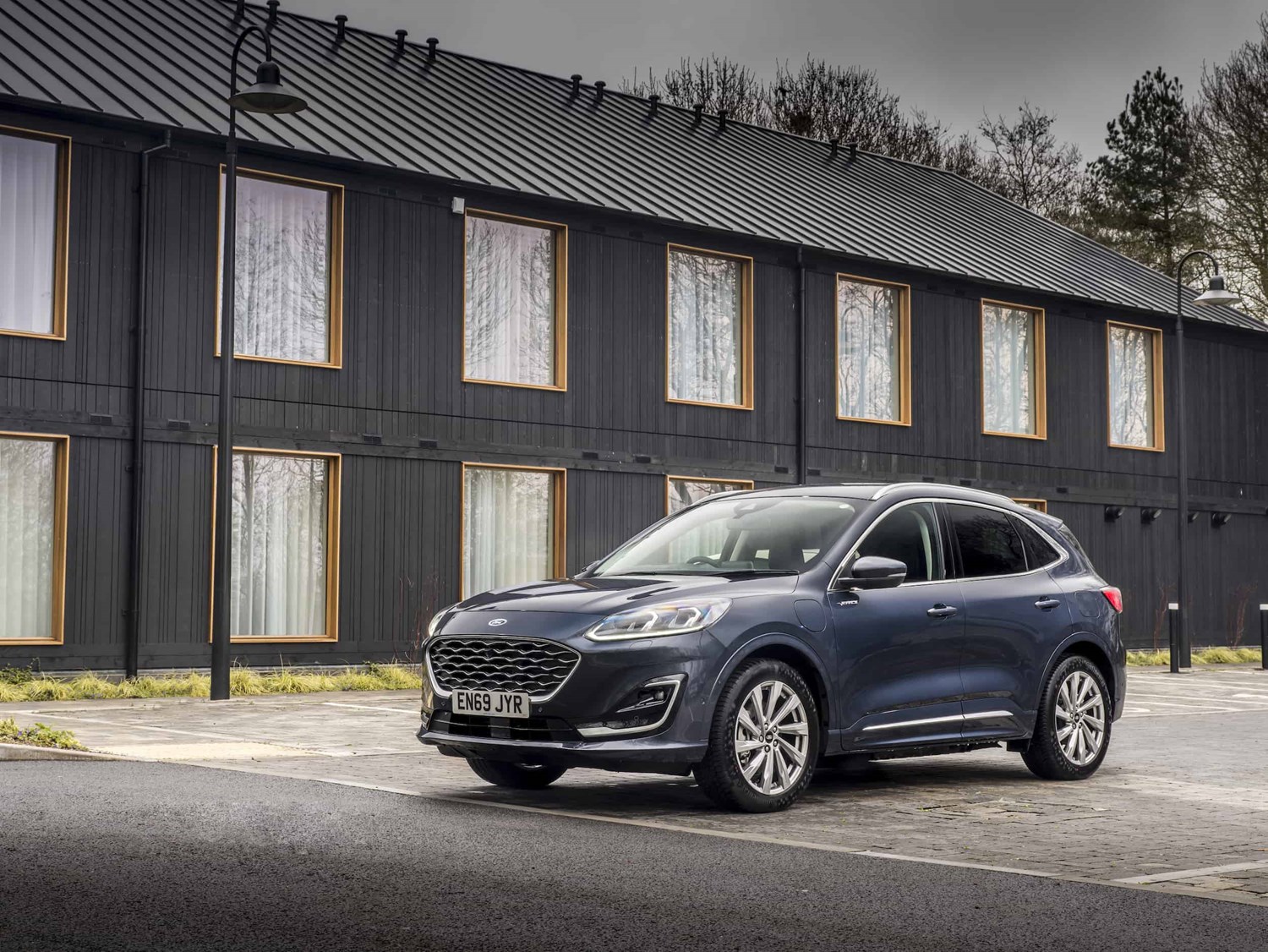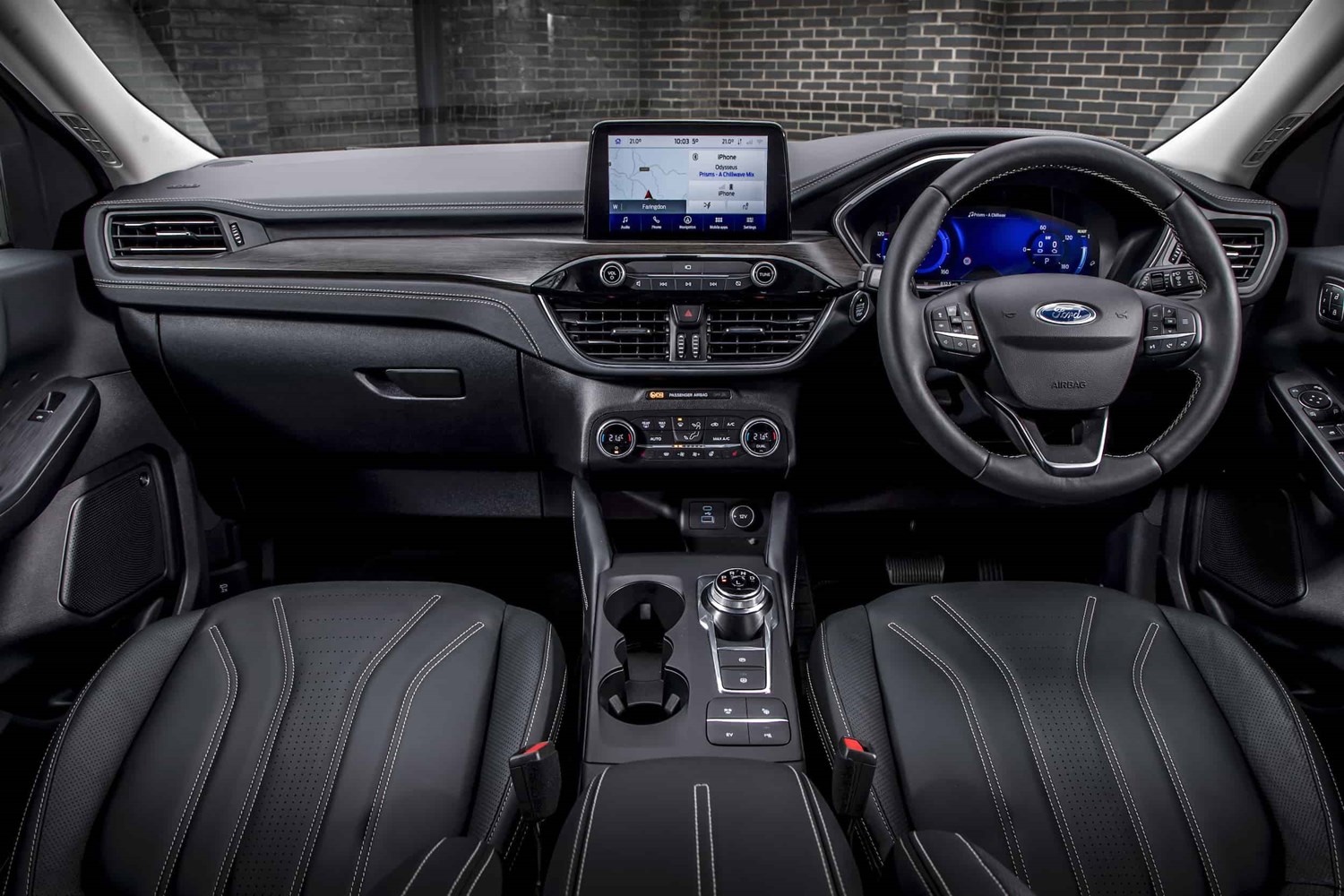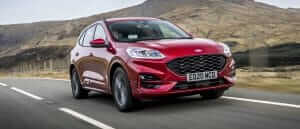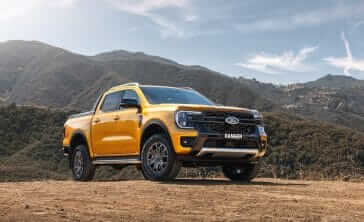Model review
Crossovers and SUVs have taken over from large saloons and estates as the vehicles of choice for large families. With this in mind, it’s no surprise that the Kuga has sold well for Ford. In fact, it’s now one of the best-selling crossovers around, with sales only just behind the Nissan Qashqai.
While Ford’s been producing SUVs for some time, the Kuga was its first ‘crossover’ and one of the earliest cars in this sector. It arrived in 2008 as a stylish and spacious high-riding model based on the excellent Ford Focus, and that’s what it’s continued to be.
Sharing much of the same platform and engines with the Focus, it’s offered with both front- and all-wheel drive, with the second-generation model arriving in 2013, before receiving a stylish facelift in 2016 - this introducing a sportier ST-Line grade, along with a more upmarket Vignale trim. And for 2020, there is a new, third-generation Kuga…
Latest model
It was nearly a full year between when the Kuga was unveiled in 2019 and when it arrived in showrooms in 2020, though it’s arguably worth the wait given how much it’s advanced compared to the predecessor.
Gone is the cheap-looking dashboard layout and its replacement looks far more modern, with an eight-inch touchscreen being fitted to all versions. The exterior has also received quite the makeover, and is hardly recognisable compared to the previous Kuga.
This new crossover is also the most electrified Ford ever, being the first Ford car to come with a plug-in hybrid derivative, while mild-hybrid versions are also available. Later in 2020, a further self-charging hybrid is also set to join the range.
Value for money
The Kuga has always been a model that’s offered great value for money in the crossover segment, and that’s something that continues to this day. With prices starting from £24,615, there are plenty of rivals that undercut the Kuga – including the Seat Ateca and Hyundai Tucson – though the Kuga’s level of standard kit helps matters. All models come with LED rear lights, an eight-inch touchscreen with smartphone mirroring and satellite navigation, along with front and rear parking sensors and Ford’s trademark heated windscreen. It’s also only around £2,000 more expensive than the equivalent Focus, which is far less roomy.
The plug-in hybrid also represents decent value for money, with models available from £33,585 – undercutting the Mitsubishi Outlander PHEV by more than £2,000. It should also be brilliantly cheap to run, too.
Looks and image
Throughout the generations the Kuga has always been one of the better-looking crossovers - having a sleek design and hiding its bulky size well. Even first generation models still look the part and on the second-generation model, it’s worth searching for a sporty ST-Line version, as these look cool with their sportier styling kit.
But this new Kuga is arguably the best-looking yet, with a much sleeker appearance than its predecessors, while it ditches plenty of the cheap-looking plastic cladding that seems to be a trademark on cars like these. It’s perhaps not as bold as other models in this class, but that’s no bad thing as it still looks the part. You can also opt for a sporty ST-Line grade or a more upmarket Vignale grade for revised styling.
The interior also feels more modern, too, thanks to the more prominent touchscreen and de-cluttered layout, and this was the area where the previous-generation Kuga was really beginning to show its age. It also feels well-built, and there’s generally high-quality materials used throughout. The only slight gripe is that even a £40,000 Kuga has a cabin layout mirroring that of a £16,000 Fiesta, which might be a bit disappointing when you’ve stumped up that kind of cash.
The Kuga also impresses behind the wheel, and feels more agile than you might expect from a high-riding crossover. While not as fun to drive as the Focus that it’s based on, it’s still more involving than plenty of rivals. This sportier stance does lead it to have a firmer ride than some of the competition – exaggerated on high-spec ST-Line X and Vignale trim levels with their 19-inch alloy wheels.
Space and practicality
Also key to the Kuga is its impressive practicality, and it comes with brilliant sliding rear seats that allow you to flick between having a larger boot or more rear legroom. It’s not quite the largest car in this class, with it having 475 litres of luggage space as standard, which increases to 526 litres with the seats moved forward. Folding the seats down increases the room on offer to 1,544 litres. It’s worth noting that the plug-in hybrid is marginally less practical, but not massively so.
Cabin space is also generous, with even taller adults likely to have no grumbles when it comes to the room on offer. If you’re considering the Kuga because the Focus is just that bit too small, this crossover is more than ideal.
Standard equipment includes autonomous emergency braking and lane-keep assist, though it’s disappointing that even flagship versions don’t come with equipment such as blind spot monitoring and adaptive cruise control without venturing onto the options list.
Engines
The Kuga is available with a seriously impressive line-up of engines – including petrol, diesel, mild-hybrid diesel and plug-in hybrid options. It really feels like there is something for everyone.
The engine line-up kicks off with a 1.5-litre EcoBoost petrol unit, which is available with either 118bhp or 148bhp, with a six-speed manual gearbox coming with both. It’s worth stumping up for the more powerful option as the 118bhp version is a bit underpowered – taking 11.4 seconds to accelerate to 60mph next to the 9.5 seconds of the more powerful option.
Moving to diesels, the line-up starts with a 118bhp 1.5-litre diesel, which comes with either a six-speed manual or eight-speed automatic gearbox. Following this is a 148bhp mild-hybrid 2.0-litre diesel, which is mated to a six-speed manual gearbox. The quickest engine to power the Kuga in the line-up is the 187bhp 2.0-litre diesel, which comes with an eight-speed automatic gearbox and all-wheel-drive – allowing it to accelerate to 60mph in 8.5 seconds. This engine is the only one to come with all-wheel-drive, too, with the rest of the range being front-wheel-drive.
Last but not least is the new plug-in hybrid, which mates a 2.5-litre petrol engine with an electric motor and 14.1kWh battery – producing 222bhp in total, which allows for a 0-60mph time of nine seconds. It utilises a CVT automatic gearbox, which allows for an electric range of 35 miles, and some especially low running costs, which we’ll get onto later...
Running costs
If you want affordable running costs and are able to charge regularly, the best option to go for is undoubtedly the plug-in hybrid. With its electric range utilised, Ford claims it’ll return more than 200mpg, while CO2 emissions of 32g/km make it a very affordable on company car tax – having a benefit-in-kind rating of just 10 per cent.
Outside of the PHEV, all Kugas should also be affordable to run, with none averaging less than 40mpg or having CO2 emissions of more than 160g/km. The mild-hybrid 148bhp 2.0-litre diesel is the one to go for, though – this returning an impressive 56.5mpg, with CO2 emissions of 132g/km.
Things to look out for
Given this new Kuga only arrived in showrooms at the start of 2020, there’s a question mark over its reliability. However, given it largely uses engines and tech that’s been tried-and-tested in other Fords, there shouldn’t be much to worry about. New Kugas will also be covered under manufacturer warranty until at least the start of 2023.
Rivals
The mid-size crossover/SUV class is one of the most competitive around, and the Kuga is up against some very popular models in this sector – including the Nissan Qashqai, Kia Sportage, Hyundai Tucson and Volkswagen Tiguan. All these are worth considering, but you could also take a look at the Honda CR-V, which has a seven-seat option, along with the Toyota RAV4 and Mazda CX-5.
Depreciation warning
Given the mainstream appeal of Fords, these models don’t tend to hold their value all that well. This applies to the previous-generation Kuga, which was a great used buy thanks to low prices. With this new Kuga being more upmarket than its predecessor, you can expect it to depreciate less than before. ST-Line trims and the new plug-in hybrid are likely to be the models that hold their value best.





